Pointe Noire is the second biggest city in the Republic of Congo and is the centre of the country's offshore oil industry. It's hot, humid and very green. We've passed through here before, but on this occasion we had a little time to explore and capture a few images of this friendly coastal town. The main drag leads to the impressive colonial-style railway station, apparently a replica of Deauville Station in Normandy, France.
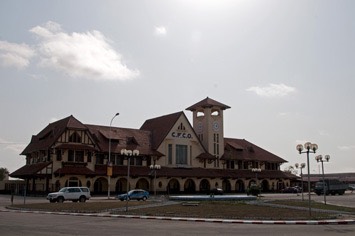
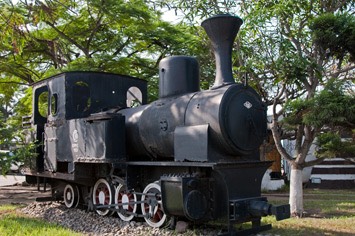
It was good to see the old signs warning against trade in great apes still in place. The graphic representation of wildlife crime as an equation is a great way to put the message across. The maximum punishment for killing, selling, buying, transporting, keeping or eating chimpanzees or gorillas is a fine equivalent to 10,000 US Dollars or three to five years in prison.
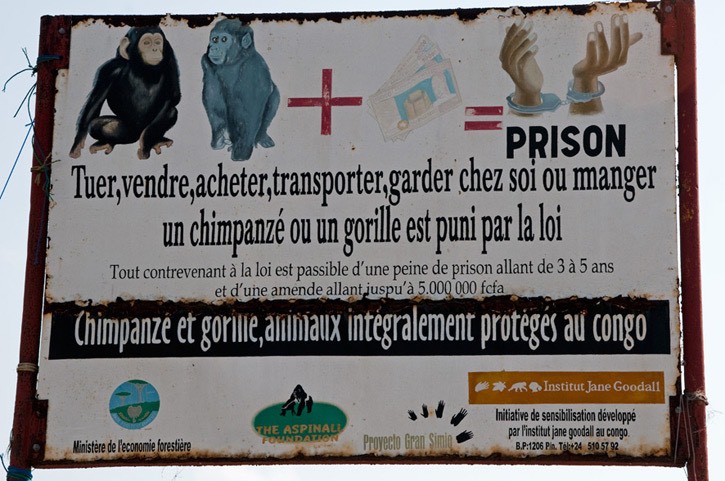
In downtown Pointe Noire we came across a couple of places where colourful paintings and souvenirs were on offer. To our dismay, several stalls had elephant hair bracelets and even leopard tooth necklaces on sale! We explained that we would not buy such items, but our concerns were brushed aside with comments like "There are plenty of leopards everywhere!". Mick's eyes fell on a carved wooden pirogue with a crew that included Tin Tin, Captain Haddock and Snowy the dog, characters whose fictional adventures long ago brought them to the old Belgian Congo. After much bargaining we eventually bought a painting, some malachite and wooden carvings.
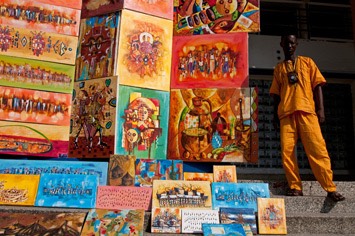
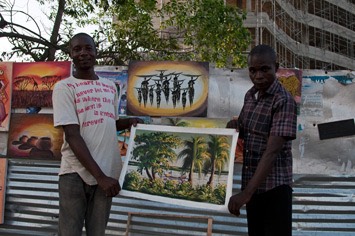
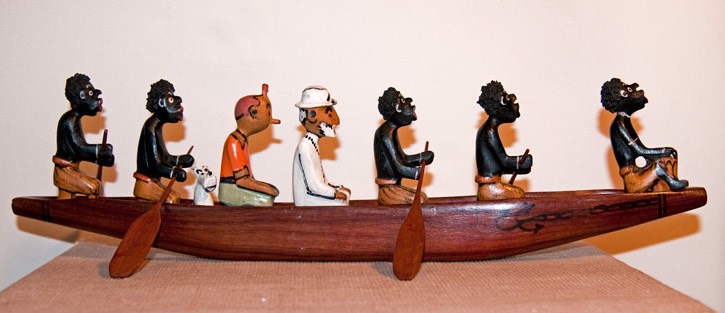
We stayed in a hotel near the beach, where the undulating roads were unpaved and full of holes that became very muddy when it rained. It all looked very green and fertile with mango and papaya trees set off by bougainvillea and vivid hibiscus flowers.
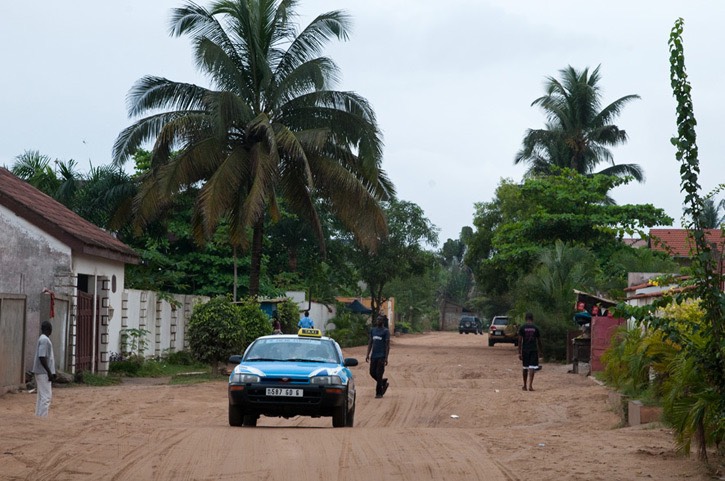
In the deeper waters offshore we saw only Spanish fishing boats, at least some from Huelva, our home port. Closer to land we came across several very funky looking purse seiners with local crews. A smaller boat goes out with them to pay out the net and encircle shoals of tuna.
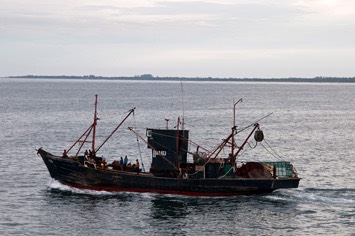
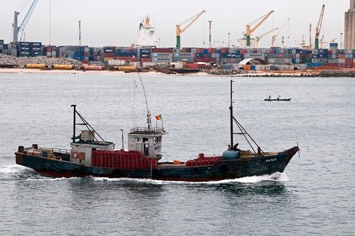
The truly artisanal fishermen still use dugout canoes or pirogues, propelled by paddling. On our last morning we went to the beach, where a derelict structure once used to load manganese ore onto ships juts into the sea. We watched several pirogues come in through the surf to land their catch on the beach.
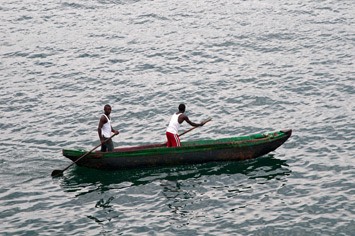
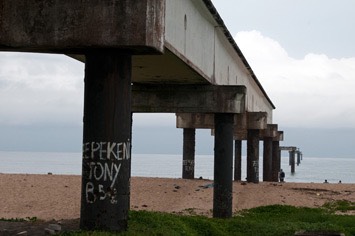
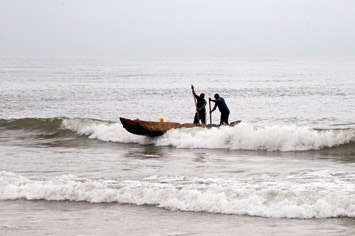
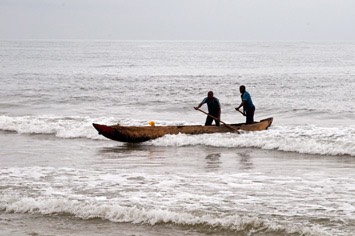
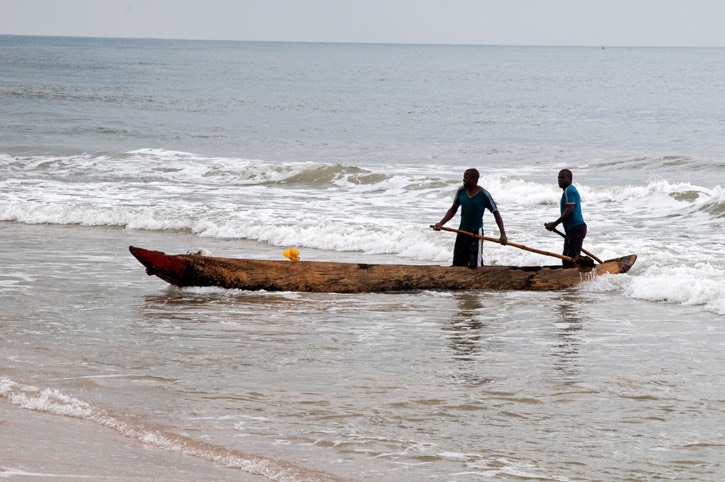
The heavy pirogues are walked up the beach by swivelling them end to end, using a pole that fits into grooves under the bow and stern. It's labour intensive work!
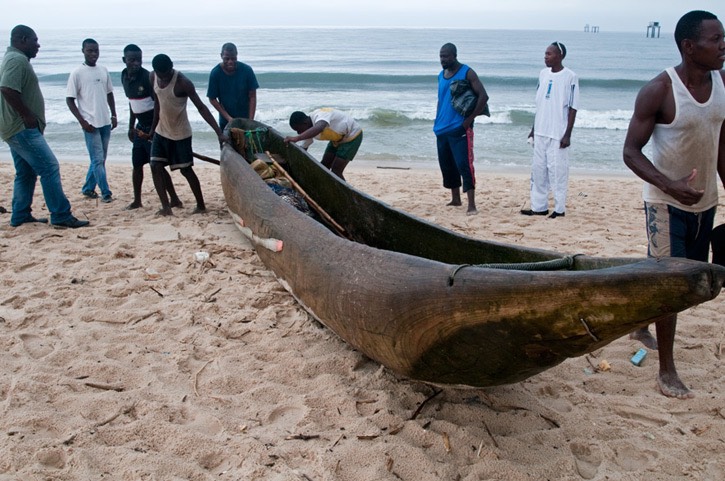
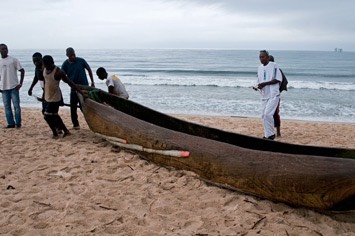
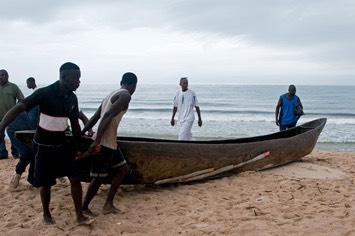
Customers gather as soon as the boats are landed. There were fish of several species, but the most valuable catch was of large crayfish, which they sold for nine Euros a kilo - quite expensive we thought!
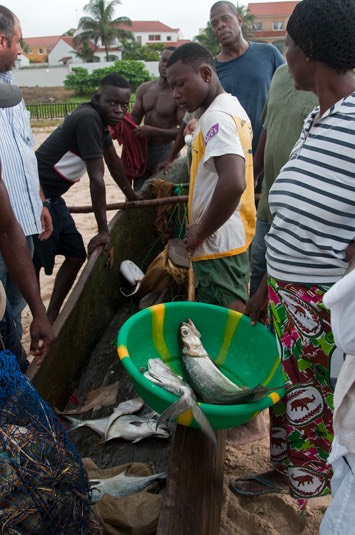
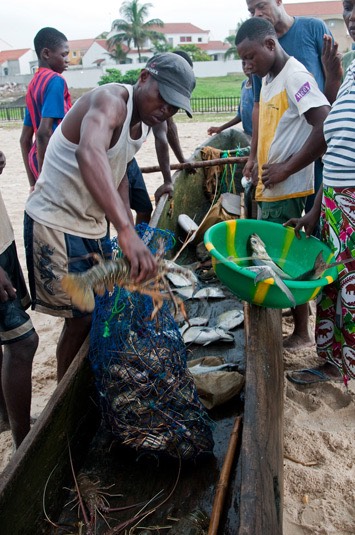
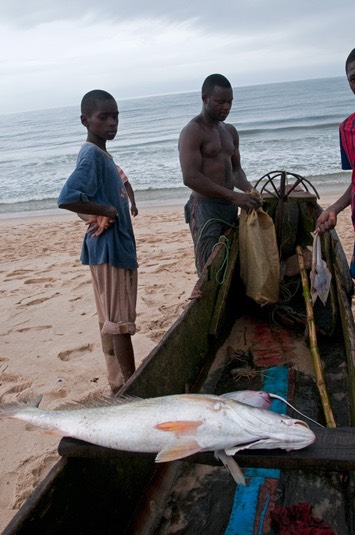
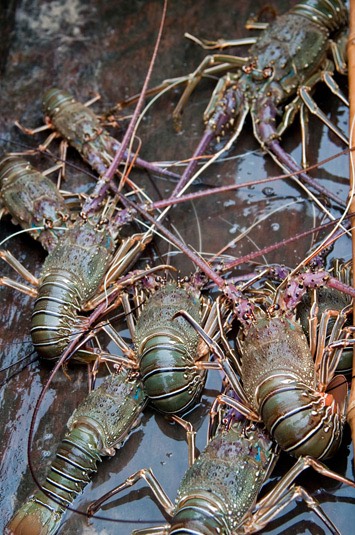
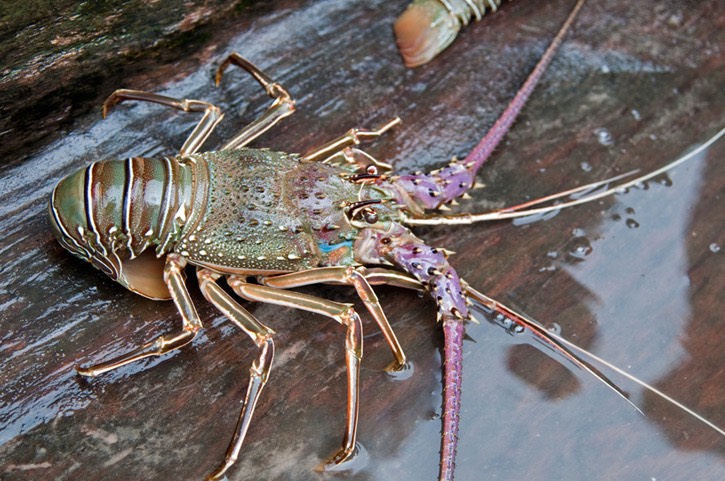
For photos of ocean life we encountered offshore go here.